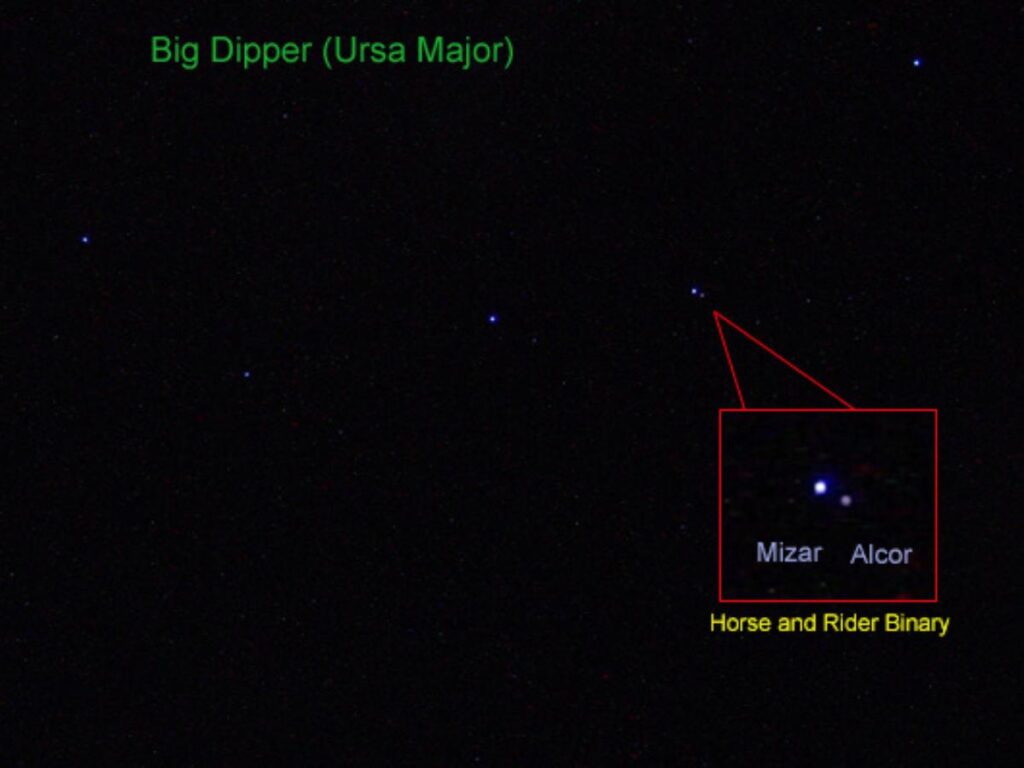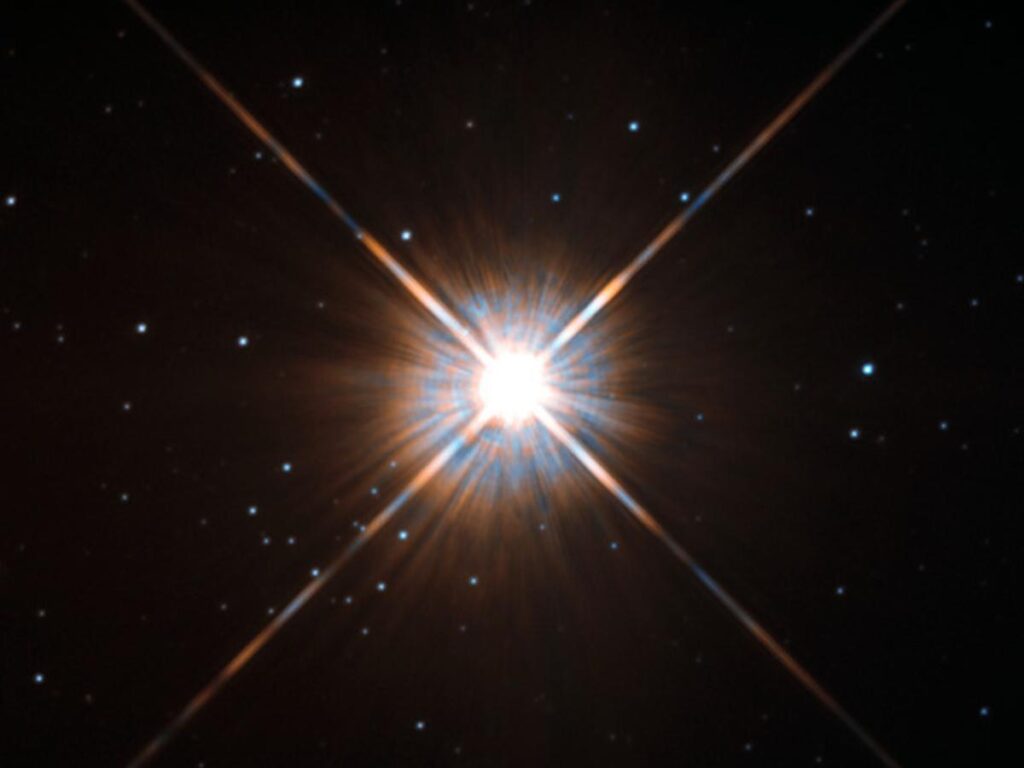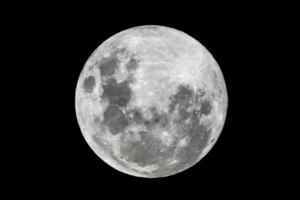What Are the Dimmest Stars You Can See With a Telescope
Disclosure: This post contains affiliate links and I may earn a small commission (at no extra cost to you) if you click through and make a purchase. Thanks in advance – I really appreciate it!
Ever looked up at the night sky and wondered just how faint a star can be before it disappears from view? Maybe you’ve squinted at a star chart or an astronomy app and thought, “Wait, is that even real, or is my screen dirty?” You’re not alone.
In this post, we’re going to break that down in plain English. You’ll learn how astronomers measure a star’s brightness, how much your eyes (and telescope) can actually see, and what kind of stars are quietly glowing on the edge of visibility.
No heavy math. No jargon overload. Just a solid guide to help you understand and maybe even find some of the faintest stars you can spot from your backyard.
Key Takeaways:
Dim stars are all around us, but seeing them depends on sky conditions, your eyesight, and your equipment.
Brightness is measured using the magnitude scale—higher numbers mean dimmer stars. The faintest visible to the naked eye under ideal conditions is around magnitude +6.5.
Amateur telescopes can reveal stars down to magnitude +13 or +14, opening up a whole new set of targets for backyard astronomers.
A star’s apparent brightness depends on its size, distance, and luminosity. Small stars like red dwarfs can be nearby and still barely visible, while distant giants may still shine brightly.
Types of inherently dim stars include red dwarfs, brown dwarfs, and white dwarfs—many of which are scientifically valuable and interesting to observe.
How Brightness Is Measured
To figure out how dim a star really is, we first need to talk about how astronomers measure brightness. And yep, there’s a scale for that—it’s called the magnitude scale.
Apparent vs. Absolute Magnitude
There are two types of magnitude, and they tell us different things:
- Apparent magnitude is how bright a star looks from Earth. It doesn’t care how far away the star is or how powerful it actually is—it’s just about what you see.
- Absolute magnitude is a measure of how bright a star actually is—its true power—if it were placed exactly 10 parsecs (about 32.6 light-years) from Earth. This levels the playing field so astronomers can compare stars more fairly.
For example, our Sun has an apparent magnitude of about -26.7 (very bright because it’s so close), but its absolute magnitude is around 4.8. Meanwhile, a super-bright star that’s far away might look dim, but have a much lower (brighter) absolute magnitude.
Bigger Number, Dimmer Star
Here’s where the scale gets weird: the higher the number, the dimmer the star.
- Bright stars like Sirius have an apparent magnitude of -1.46
- The faintest stars you can see with your naked eye in a dark sky? Around +6.0 to +6.5
- A decent backyard telescope can reach stars as faint as +13 or +14
So when someone says a star has a magnitude of +10, it’s not 10 times brighter—it’s much dimmer—than one with a magnitude of +1. It’s a bit counterintuitive at first, but you get used to it.
What Can We Actually See?
The limits of human vision depend on where you are and how dark your sky is. If you’re in a city with a lot of light pollution, you might only see stars up to magnitude +3 or +4. Get out to a dark rural spot, and your eyes might stretch to +6.5—that’s about the faintest the average person can pick up without help.
With a telescope? Even a modest amateur setup can push past +10, and with a good sky and the right conditions, maybe up to +14. After that, you’re getting into territory that needs more serious equipment, like astrophotography rigs or observatory-grade scopes.
Bottom line: the dimmest stars you can see depend on how dark your sky is, how sensitive your eyes or gear are, and how patient you’re willing to be.
Dimmest Stars Visible to the Naked Eye
If you’ve ever been out under a really dark sky—no streetlights, no glowing skyline, just you and the stars—you might be surprised at how many you can actually see. But even in the best conditions, there’s a limit.
The Naked-Eye Limit: Around Magnitude 6.0 to 6.5
Most people with decent eyesight can see stars down to about magnitude +6.0 to +6.5 when the sky is truly dark. That’s the threshold where stars stop standing out and start blending into the background. You have to let your eyes adjust, stay still, and really pay attention.
If you’re in a suburban area, though? You’re probably stuck seeing stars no dimmer than +4.0 or so. In the middle of a city? You might only spot the brightest few, like Sirius or Vega, which are around magnitude -1 to 0.
What Affects What You Can See?
A few things come into play when you’re trying to push the limits of your vision:
- Light pollution: City lights wash out the sky. Even car headlights can ruin your dark adaptation. The darker your surroundings, the more stars you’ll see.
- Your eyes: Everyone’s eyesight is a little different. Age, visual acuity, and how well your eyes adjust to darkness all matter.
- The atmosphere: Haze, humidity, and even the moon can scatter light and make dim stars harder to see. Colder, drier nights usually offer better viewing.
Real-World Examples of Barely-Visible Stars
Let’s say you’re out in a dark-sky park with minimal light pollution. What could you spot?
- Alcor, the companion to Mizar in the Big Dipper, has a magnitude of about +4.0—easy under most skies.
- Omicron² Eridani, a star in the Eridanus constellation, shines at +4.4, so it’s just above average visibility.
- 6 Lacertae, a lesser-known star in the Lacerta constellation, is around +5.9. This is close to the edge of what most people can see without gear.
- Mu Cephei (The Garnet Star) – +5.0 to +5.1
Located in the constellation Cepheus, this red supergiant has a deep reddish hue that’s noticeable even without gear—if you can spot it. Its brightness varies slightly, but it’s a fun star to hunt near the Milky Way in late summer and fall. - Theta Tucanae – +6.1
In the southern constellation Tucana, this one’s barely visible even under good conditions. You’ll need to be in the Southern Hemisphere to try this one. - HR 858 (HD 179070) – +6.4
Found in Cygnus, this star gained attention during the Kepler mission because of its exoplanets. It’s a good example of a scientific target that’s just on the edge of visibility. - 58 Eridani – +5.5
This star in Eridanus is another sun-like star that’s right at the limit in light-polluted areas. Under darker skies, it’s visible with the naked eye but easy to overlook. - HIP 117928 (in Pisces) – +6.3
A relatively dim star near the Pisces–Aries border. It’s the kind of star that’s easy to skip over unless you’re deliberately searching with a chart or app. - Phi¹ Orionis – +4.4, and Phi² Orionis – +4.1
These two are close together and faint compared to Orion’s brighter stars, but they’re a fun pair to try spotting after you’ve locked down the main constellation.
These barely-visible stars are great targets if you’re trying to test how dark your skies are or how well your eyes are adapting. It’s a subtle challenge, but one that a lot of amateur astronomers enjoy.

Mizar and Alcor in constellation Ursa Major. (Source)
Dimmest Stars Visible with a Telescope
Once you bring a telescope into the mix, a whole new layer of the night sky opens up. Even a beginner scope can reveal stars that are completely invisible to the naked eye. The difference is dramatic—like switching from AM radio to high-definition streaming.
How Far Can Telescopes Go?
A decent amateur telescope can spot stars as faint as magnitude +12 to +14, depending on sky conditions and the scope’s size. Bigger aperture = more light = dimmer stars visible.
Here’s a rough guide:
- Small telescopes (60–90mm): Reach about +11 to +12
- Mid-size telescopes (4–6 inches): Reach around +13
- Larger amateur scopes (8+ inches): Push into +14+ territory
Keep in mind, these are best-case numbers—clear skies, no moon, dark surroundings, and good optics.
Faint Stars Worth Hunting
If you’re curious what extremely dim stars actually look like through a scope, here are a few challenging (but rewarding) targets:
- Proxima Centauri – +11.1
The closest star to the Sun. You’d think that means it’s easy to spot—but nope, it’s faint. You’ll need a good chart, a dark sky, and probably at least a 4-inch scope to see it. - Van Biesbroeck’s Star (VB 10) – +17.3
Technically visible only in large observatory-class scopes or via imaging, but it’s one of the dimmest red dwarfs ever discovered. Including it here for curiosity’s sake—it shows how far down the rabbit hole you can go. - Barnard’s Star – +9.5
A nearby red dwarf in Ophiuchus. Not the dimmest you can see, but definitely one of the coolest. It has one of the fastest known proper motions of any star. - Teegarden’s Star – +15.1
Very dim and very close, just 12 light-years away. You’d need a large amateur scope (10+ inches) and great sky conditions to even have a shot. - Luyten’s Star – +9.9
A red dwarf in Canis Minor, about 12 light-years away. Fairly dim, but reachable with a modest telescope and a great example of a nearby, quiet star. - Wolf 359 – +13.5
One of the closest stars to Earth (~7.9 light-years), but incredibly faint due to its small size and low temperature. A favorite for experienced observers with 6- to 8-inch scopes. - Ross 154 – +10.4
Located in Sagittarius. Another nearby red dwarf, and a known flare star. It’s a good mid-difficulty target and a cool reminder of how active small stars can be. - Struve 2398 A/B – +8.9 / +9.7
A binary red dwarf system in Draco. These are faint but not extremely hard to reach, and they give you a two-for-one challenge. - WISE 0855−0714 – ~+25 (infrared only)
Not visible in optical wavelengths, but it’s one of the coldest known brown dwarfs. You won’t see it visually, but it’s a good reminder that some of the dimmest “stars” aren’t visible at all without special equipment. - Gliese 570 D – ~+16.5
A T-type brown dwarf orbiting a multiple star system in Libra. You’d need a large scope and great conditions, but it’s one of the coolest (and faintest) known stellar objects accessible to amateurs with advanced gear. - GJ 1245 A/B/C – +12 to +14
A triple red dwarf system in Cygnus. Each component is faint, but they’re packed close together, which makes it a great challenge if you want to test your optics and star-hopping skills.
Tips for Finding and Observing Dim Stars
- Use a star chart or app: Don’t rely on guessing—faint stars are easily confused with background noise or dim galaxies.
- Start with known nearby bright stars: Use them as reference points, then “hop” your way to the dimmer target.
- Let your eyes adapt: Give it 20–30 minutes without any bright lights. Even the red glow of a headlamp should be kept dim.
- Avoid the moon: Its light can completely wash out fainter stars. Try to observe near new moon phases.
- Collimate and cool your scope: Optical alignment and temperature can affect image sharpness—important when chasing faint points of light.
Spotting a magnitude +13 star isn’t about seeing something dramatic—it’s about knowing it’s there, recognizing it, and building the skills to spot even subtler objects. That’s where the fun really starts.

A comparison of a Brown Dwarf to our Sun, a low mass red dwarf star, Jupiter, and the Earth.. (Source)
What Makes a Star Dim?
Not all dim stars are created equal. Some are small and weak. Some are just far away. And some are both. If you’ve ever wondered why a star looks faint—even through a telescope—there are a few key reasons.
Size, Distance, and Luminosity
When it comes to how bright a star looks from Earth, three things matter:
- Size: Bigger stars usually put out more light, but not always. A giant star will generally be brighter than a tiny one—but again, distance plays a big role.
- Distance: This is the big one. A very bright star that’s far away can look dimmer than a small, faint star that’s close by. Light spreads out the farther it travels, so distance dims even powerful stars.
- Luminosity: This is a star’s true energy output—how much light it’s actually giving off. Some stars are just naturally low-energy. They glow faintly, even if they’re nearby.
Types of Inherently Dim Stars
Some stars are faint not because they’re far, but because they’re simply not very powerful. These are the types most often lurking in the low-magnitude range:
- Red Dwarfs: These are the most common stars in the galaxy. They’re small, cool, and long-lived. Most red dwarfs are invisible without a telescope because their light is so faint, even if they’re relatively close.
- Brown Dwarfs: These aren’t quite stars and aren’t quite planets. They didn’t get massive enough to start hydrogen fusion, so they just sit there glowing dimly—mostly in infrared. You can’t see them with your eyes, and even telescopes struggle without special sensors.
- White Dwarfs: These are the hot, dense leftovers of stars like our Sun after they burn out. They’re small—about the size of Earth—but extremely dense. They can still be hot, but their small size means they don’t shine very brightly.
Faint But Close vs. Bright But Far
Here’s where things can get counterintuitive.
- Proxima Centauri is the closest star to Earth (after the Sun), but it’s barely visible in a telescope because it’s a red dwarf with low luminosity.
- On the other hand, Deneb, in the constellation Cygnus, is one of the most luminous stars known—but it’s so far away (about 2,600 light-years) that it only looks like a modestly bright star in our sky.
So a star can be:
- Faint and far → invisible
- Bright and far → visible
- Faint and close → barely visible
- Bright and close → blinding (hello, Sun)
When you’re stargazing, you’re not just seeing stars—you’re seeing a mix of energy, distance, and cosmic perspective. That’s what makes the hunt for dim stars so fascinating.

Proxima Centauri lies in the constellation of Centaurus (The Centaur), just over four light-years from Earth. (Source)
Why Bother with Dim Stars?
With so many bright, beautiful stars up there—why chase the ones you can barely see? Honestly? Because that’s where a lot of the good stuff lives.
Scientific Value
Dim stars might not be flashy, but they’re incredibly important to astronomers. Most of the stars in our galaxy are faint red dwarfs. They outnumber big, bright stars by a huge margin. If we want to understand how the galaxy works, we have to understand the quiet, low-luminosity stars too.
Dim stars also tell us a lot about stellar evolution—how stars are born, live, and die. White dwarfs are a snapshot of what happens when stars like our Sun run out of fuel. Red and brown dwarfs show us what happens when stars never really “get going” in the first place.
Plus, many faint stars are exoplanet hosts. A lot of the small, rocky planets we’ve found orbit quiet little stars that don’t overwhelm the light from their planets. If we ever detect signs of life out there, odds are good it’ll be around a dim star.
Observational Challenge
From an amateur perspective, dim stars are the deep end of the pool. You’ve already found the Big Dipper? Great. Spotted Vega, Betelgeuse, and Polaris? Awesome. Now what?
Finding and identifying dim stars pushes your skills:
- You need to know your charts
- You need to plan your viewing
- You have to account for seeing conditions, gear limits, and your own vision
It’s not just “look and see.” It’s more like a puzzle—and solving it feels pretty great.
Personal Satisfaction and Skill-Building
There’s something uniquely satisfying about spotting a star most people have never heard of—and could never see without effort. It’s quiet work. No crowd. No applause. Just you, your scope, and that tiny, barely-there point of light.
You get better at reading the sky. You learn to notice subtle differences. You stop relying on obvious, bright markers and start trusting your instincts and experience.
In short: dim stars make you a better observer. And that’s worth something.
Conclusion
The brightest stars get all the attention—but the dim ones are where the real challenge (and satisfaction) lives. If you’ve never tried spotting a +6 magnitude star with your naked eye, or a +13 star through your telescope, now’s the time to see what you’re really capable of.
Test Your Limits
Start simple: find the dimmest star you can see from your backyard. Then take the same challenge to a darker spot. How far can you go? The more you try, the more you’ll learn—about your skies, your gear, and your own ability to read the night.
Dim stars teach patience and precision. They’re not loud or obvious. You have to meet them halfway.
What to Try Next
- Use a star chart or astronomy app (like Stellarium, SkySafari, or Star Walk) to identify faint stars in your area
- Log your observations—note sky conditions, magnitudes, and what gear you used
- Upgrade your gear if you’re ready: a larger aperture or better eyepiece can reveal a lot
- Join a local astronomy club to share tips and tackle faint objects together
There’s always a deeper layer in the sky. Dim stars remind us that the universe is bigger, quieter, and more intricate than it first appears.
Now go outside and find something most people will never notice.
Written by:

Kavya Joshi
My love affair with space began in a field in India at the age of 7, when I looked up at the Milky Way for the first time. Ever since, I have been attempting to cram in every fact about the Universe, I can find into my head.
ABOUT US
We are a team of active amateur astronomers, here to help you with all your astronomy and science related needs – this is anything, from reviewing the latest telescopes to be released to talking about gravity and neurons. The Big Bang Optics was started because of our love for astronomy and to help others like us find the best telescope and accessories.
LEGAL DISCLAIMER
The Big Bang Optics is a participant in the Amazon Services LLC Associates Program, an affiliate advertising program designed to provide a means for sites to earn advertising fees by advertising and linking to Amazon.com. The Big Bang Optics also participates in affiliate programs with Clickbank and other sites. The Big Bang Optics is compensated for referring traffic and business to these companies.




